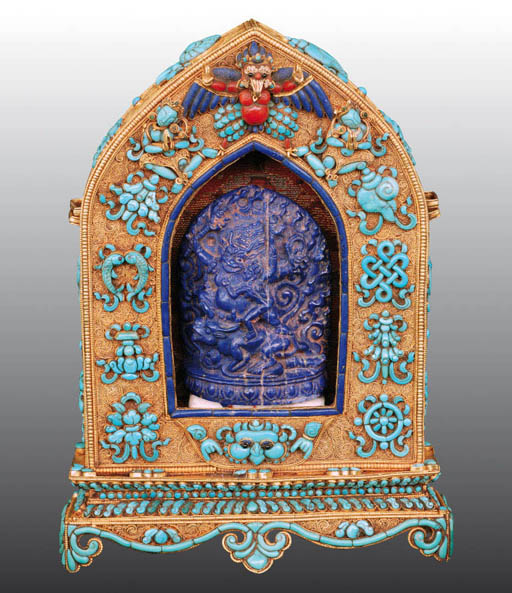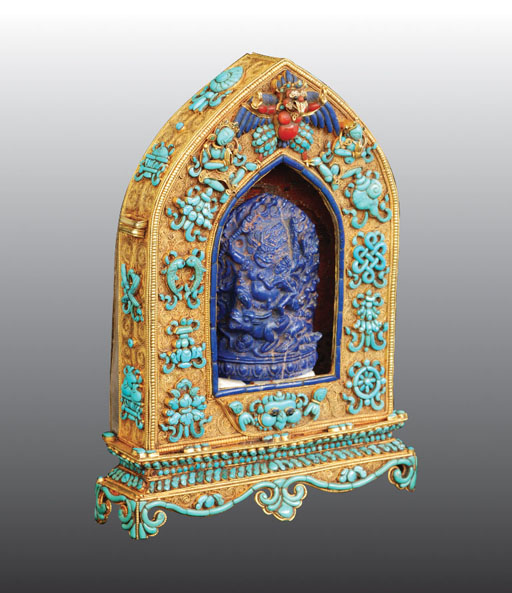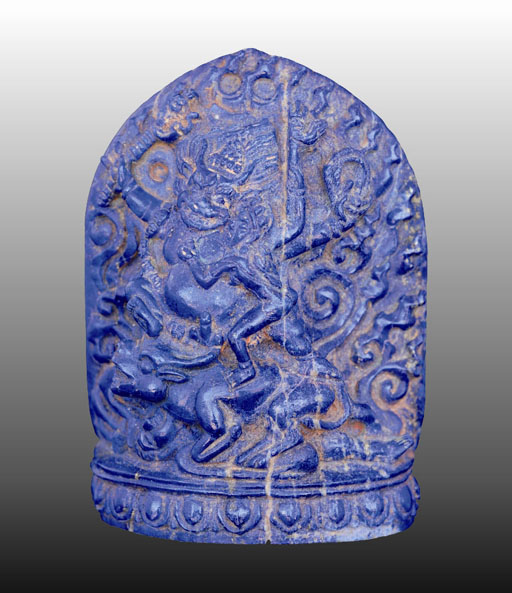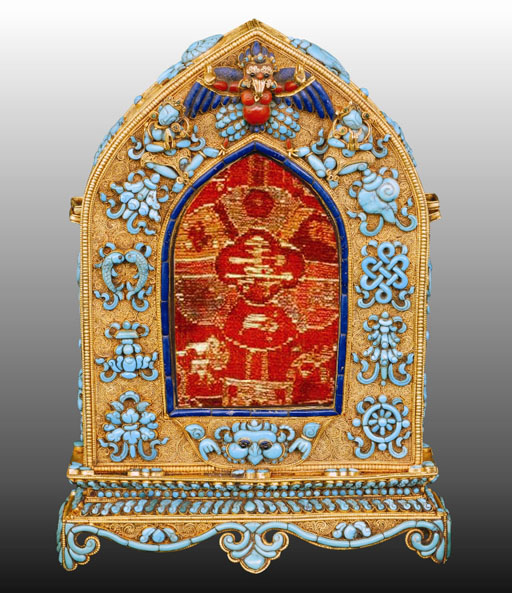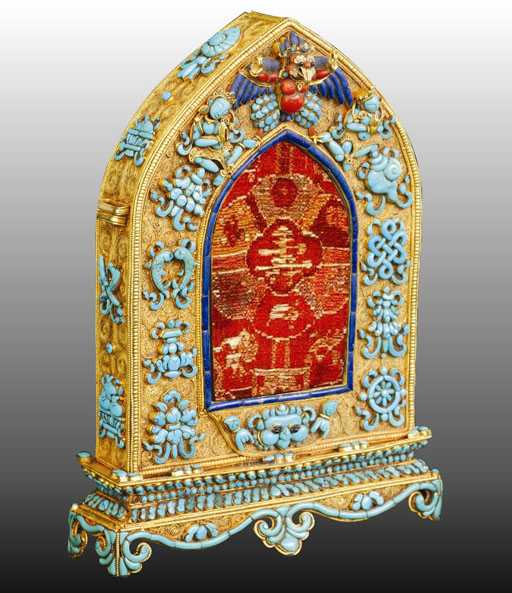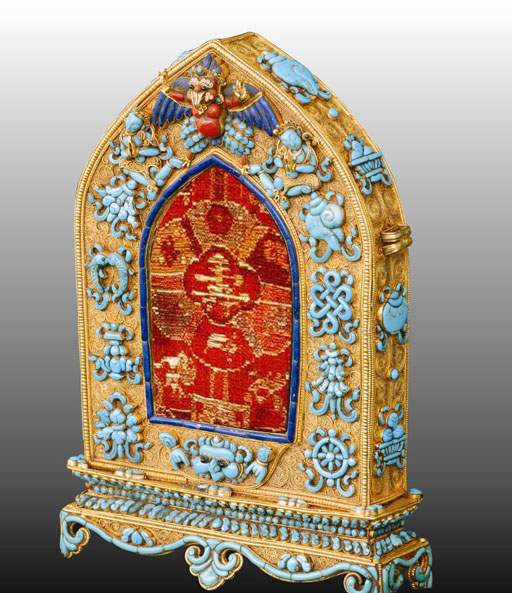|
|
«« go back
Gha’u
Tibet - Gold, turquoise, lapis lazuli, coral silver - Height 18 cm - 19th century
Gha’us are decorated boxes for holding and carrying relics, talismans, sacred items and images of Buddhas or deities. This remarkable piece decorated with plant motifs in filigree, a technique imported into Tibet by the Newar artists of the Nepal Valley (1), features symbols and images of minor deities and mounted semi-precious stones. Given the quality of the craftsmanship of this piece, it might have come from a town like Shigatse, in southwest Tibet, where the standard of the goldsmith’s art was very high. Shigatse was an important centre for this kind of work and one of the places where generations of Newar artists lived over the centuries.
The frontal section of this ga’u is set on a double lotus- shaped base produced using turquoises and depicts the Eight Auspicious Symbols of Good Fortune, divided between the two sides of the frame. Said symbols are the Lotus, the vase containing the nectar of long life, the two fish facing each other, the umbrella, the conch shell, the endless knot, the banner of victory and the wheel of the Dharma. The eight symbols are repeated on the sides of the box, where there are also two rings, through which a cord would be threaded in order to attach the ga’u to a belt. At the top of the front, in the centre, there is Garuda (see no. 7), finely produced using turquoises, corals and lapis lazuli. Garuda is accompanied by two flying gods
produced with turquoises and shown making the gesture of homage (namaskâra-mudrâ). A kîrtimukha (“Face of Glory”) has been depicted in the lower section. This monstrous being of Shaiva origin (2) became highly popular in Buddhism, too. Three stylized strings of gold beads of differing sizes are visible on the outer edge of the frontal frame.
An image of Yama, the bull-headed Lord of Death of Vedic origin adopted by Buddhists has been added to the interior. In a Buddhist context Yama plays several roles, but mainly that of protector of the doctrine in virtue of his connection with death and of his function of judge of the actions of the deceased. Indian texts describe him as being stout, oneheaded, having a ferocious appearance and holding a sceptre in his right hand and a lasso or another attribute in his left. However, they make no reference to the bull-head with which he is depicted in Buddhist iconography (3). The dark blue colour, which is a characteristic of his iconography, is that of the stone, lapis lazuli, used for this image. Yama, here with his sister Yamî, has been depicted standing and with an erect penis, in a militant posture on a buffalo, a symbol of evil. This latter is crushing the body of an enemy of the Buddhist doctrine, symbolizing the obstacles which may appear along the pathway to Enlightenment. () John Clarke, Jewellery of Tibet and the Himalayas, Timeless Books, Delhi 2004, p. 45. (2) Robert Beer, The Handbook of Tibetan Buddhist Symbols, Serindia, Chicago and London 2003, p. 78.(3) Erberto Lo Bue, Immagini divine e spazi sacri, in Erberto Lo Bue and Chiara Bellini, Arte del Ladak. tesori di arte buddhista nel Tibet indiano dall’XI al XXI secolo, Jaca Book, Milano 2011 (forthcoming). For a similar Gha'u Referenze : Sacred Symbolos “The Ritual Art of Tibet” Robert A.F. Thurman – David Weldon Sotheby,s “Rossi & Rossi” New York 1999 Page 70 n° 30 “Traveling Shrine (Tbt Gha’u)
|
